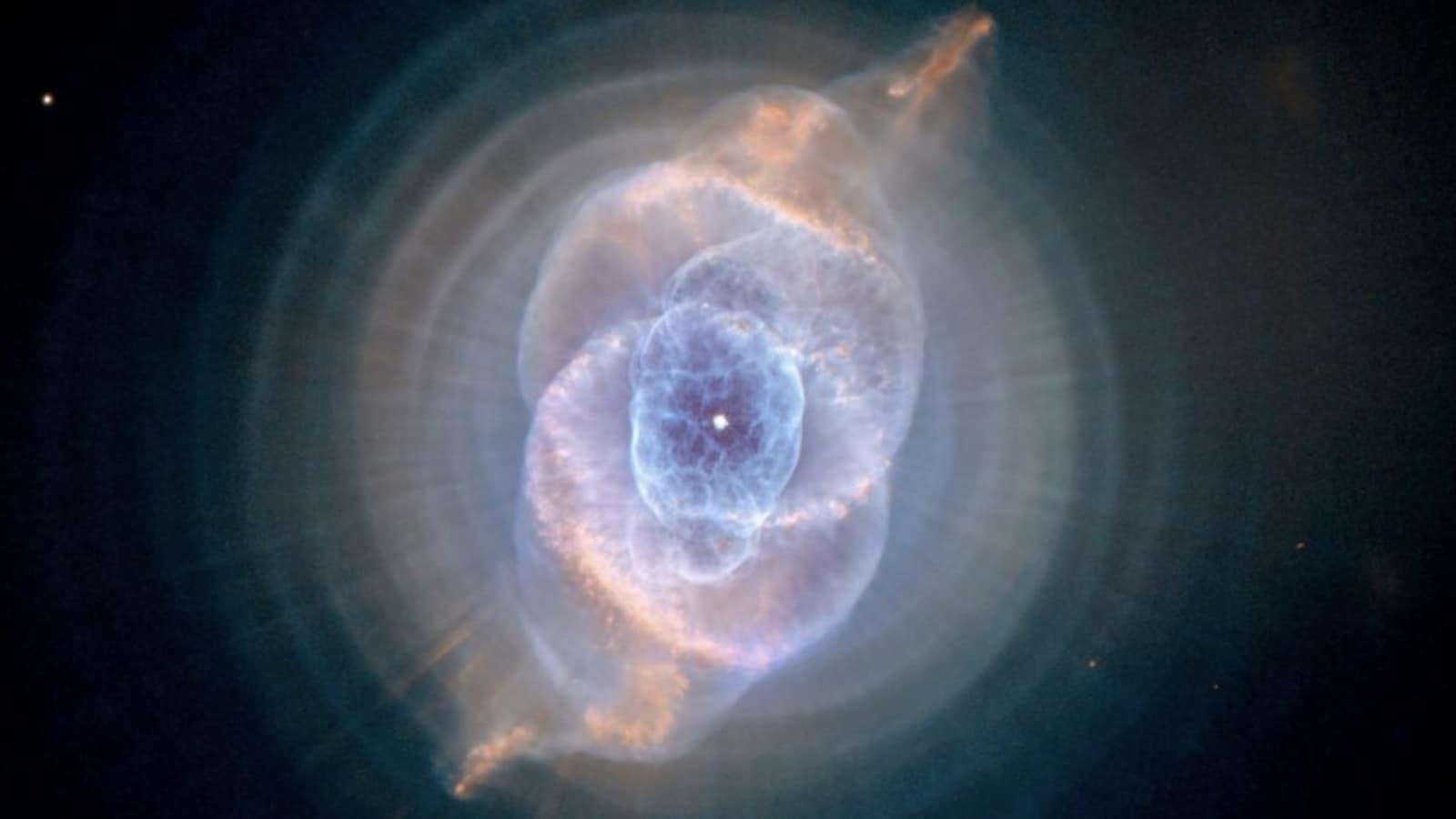Since humans first began looking into the sky, thousands of questions about space, the universe, and galaxies have remained unanswered. The search for answers and unraveling the Universe’s greatest mystery about its creation has allowed humans to discover the wonders of space, including galaxies, nebulas, moons, planets, and interacting black holes. Space agencies like NASA continue to share fascinating images of space for us to better understand the Universe.
Two bulbous shapes shine in the center. Gas hues in blue and violet tones radiate near the center, while fuchsias, reds, and pinks surround the outer edges. Stars dot the background.
Eta Carinae may be about to explode, but no one knows when. It could be in the relatively near future, although (astronomically speaking) that may be a million years away. With a mass about 100 times that of our Sun, Eta Carinae is an excellent candidate for a full-blown supernova, or the explosion of a star.
Swirls of brilliant green hues fill this view of space. In the center, the bright “heart” of the Crab Nebula can be seen. Stars dot the sky in the distance.
The eerie glow of a dead star, which long ago exploded in a supernova, is revealed in this image of the Crab Nebula taken by @NASAHubble. But don’t be fooled: the ghoulish-looking object still has a pulse. Buried in the center is the star’s telltale heart, beating with rhythmic precision.
This light-year-long, caterpillar-like knot of interstellar gas and dust is a newborn star: a protostar.
Stars form in large clouds of gas and dust called molecular clouds. These huge clouds are cool and clump together. Over time, gravity causes some of these clumps to collapse. When this happens, friction causes the material to heat up, eventually leading to the creation of a protostar.
Caldwell 69 is one of more than 100 objects in the Caldwell Catalogue, a list of galaxies, nebulae, and other cosmic wonders easily visible to amateur astronomers.
The fiery, dying star at its center, which shines at a temperature of more than 450,000 degrees Fahrenheit (250,000 Celsius), is shrouded in a blanket of icy hailstones.
A cat’s eye nebula. At the center is a bright point of light. As you move away from the center, there are bubbles of dust; the most central one is blue. These layers appear as concentric rings at the edges of the nebula, very similar to the layers of an onion cut in half.
Planetary nebulae are a category of nebulae. They got their name because when they were first observed with early telescopes, they resembled planets. However, a planetary nebula is the final stage in the evolution of a star similar to our Sun.
Disclaimer:
The information contained in this post is for general information purposes only. We make no representations or warranties of any kind, express or implied, about the completeness, accuracy, reliability, suitability or availability with respect to the website or the information, products, services, or related graphics contained on the post for any purpose.
We respect the intellectual property rights of content creators. If you are the owner of any material featured on our website and have concerns about its use, please contact us. We are committed to addressing any copyright issues promptly and will remove any material within 2 days of receiving a request from the rightful owner.

